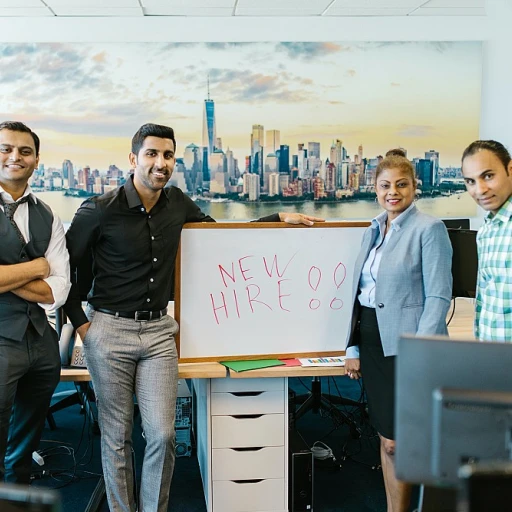The Essence of California's Right to Disconnect
The Core of 'Right to Disconnect' in California
In recent years, the conversation around work-life balance has intensified, prompting states like California to take significant steps towards legally defining the right to disconnect. Essentially, this right empowers employees to ignore communications from their employers during nonworking hours without fear of reprisal. California's proposed bill, often referred to as the 'disconnect bill,' seeks to establish a clear boundary between work hours and personal time for employees.
This initiative isn't merely about reducing stress and enhancing worker comfort; it aligns with broader public and workplace trends emphasizing employee autonomy and mental health. By allowing employees the freedom to disengage from work-related tasks outside sanctioned working hours, the law fosters a healthier working environment and helps prevent burnout and work-induced stress. San Francisco, a major California hub, exemplifies the shift towards a more balanced life for workers, advocating strongly for this bill.
As detailed in an analysis of California's progressive employment laws, the right to disconnect law marks a significant evolution in employment law, suggesting a paradigm shift towards a more equitable workplace. The bill emphasizes that non-exempt and exempt employees alike must be treated equitably concerning their right to disconnect. This Californian legal framework may well serve as a model for other states, reflecting nationwide changes in how we perceive employment and personal time.
Implications for Employer Branding
Employer Branding in the Context of Right to Disconnect
The introduction of California's right to disconnect has significant implications for employer branding within the state. This law, designed to give employees the freedom to disengage from work-related communications during nonworking hours, reshapes how employers portray their organizational culture and values.
For companies, employer branding is more than just showcasing their logo and achievements. It's about aligning with the evolving workplace developments and societal expectations. In the current scenario, employers must emphasize their commitment to respecting employees' time beyond work hours. This commitment is becoming a crucial part of a company's public image.
By integrating the right to disconnect into their core values, companies in California can enhance their appeal not only to potential hires but also to existing employees. The law encourages the creation of a healthier work-life balance, which has increasingly become an expectation among today's workforce.
Employers who are seen supporting this law are likely to be perceived as progressive and employee-centric. This perception can lead to increased employee retention, as workers feel more respected and valued in a workplace that honors their right to ignore non-urgent communications during nonworking hours.
Companies must strategize their communication policies creatively to ensure they maintain engagement with their workforce without infringing on personal time. The evolution of employer branding to incorporate these new compliance standards is an essential shift for modern employers navigating the complexities of employment law in California.
Challenges Faced by Employers
Balancing Compliance and Productivity in the Workplace
The introduction of California's right to disconnect law presents numerous challenges for employers, especially in relation to maintaining productivity while respecting employees' nonworking hours. This law obliges employers to acknowledge individuals' rights to disregard work communications outside the established work hours. As such, employers are tasked with the responsibility of navigating this new landscape while ensuring operational efficiency.
One of the primary challenges arises from the need to redefine communication protocols, particularly for businesses with operations beyond California, such as San Francisco. Inconsistent application of the law across different states could lead to confusion among employees about their rights and employers regarding their obligations.
Another challenge lies in distinguishing between exempt and non-exempt employees. Exempt employees, who typically have more flexible schedules, may struggle with expectations surrounding their availability during nonworking hours. Employers must ensure that non-exempt employees, however, fully benefit from this legal protection.
There is also the issue of updating human resources policies to comply with the new regulations. Consequently, organizations may need dedicated resources to manage these changes efficiently. Furthermore, internal communications must be clear and precise to reassure workers of the company's commitment to complying with this law, fostering trust within the workplace.
In overcoming these challenges, employers should consider leveraging talent analytics to provide insights into work-life balance practices. Implementing data-driven strategies can optimize workflows, ensuring that neither productivity nor employee satisfaction is compromised. For more information on how to enhance employer branding with such techniques, please check out the enhancing employer branding with talent analytics resource.
Best Practices for Employers
Embracing the Right to Disconnect: Key Recommendations for Employers
In light of the new California Right to Disconnect law, employers are tasked with fostering a workplace that respects employees' well-being while aligning with this legislation. Here are some best practices to help manage these transformations effectively:
- Define Clear Policies: Employers must establish explicit rules detailing nonworking hours and ensure these coincides with the employees' right to disconnect. This includes transparent communication making employees aware of their rights regarding non-urgent communications employer-related outside of working hours.
- Promote Work-Life Balance: Encourage a culture where work-life balance is prioritized. Recognizing the importance of time off can enhance employee satisfaction and retention, especially in high-stakes settings such as in San Francisco.
- Adjust Management Practices: Offer management training that highlights the risks of overburdening employees during nonworking hours. Encourage managers to respect employees' off-hours, thereby fostering an environment that minimizes work-related stress.
- Monitor Workloads: Regular check-ins with employees on their workloads can prevent burnout and ensure that a balance is maintained. This might also include assessing the potential pressures on exempt employees who might have unspecified working hours.
- Use Technology Wisely: Implement tools that optimize working hours and respect the disconnect law. This could mean scheduling non-urgent communications during public working hours, thus respecting employees' personal time outside the workplace.
Adopting these practices ensures that the transition aligns with California state laws while promoting a healthy work culture that values employees' time and upholds a strong employer brand. As the labor commissioner’s insights guide businesses in maintaining compliance with employment law, leveraging these methods can greatly enhance the efforts to respect the right disconnect in the digital era.












